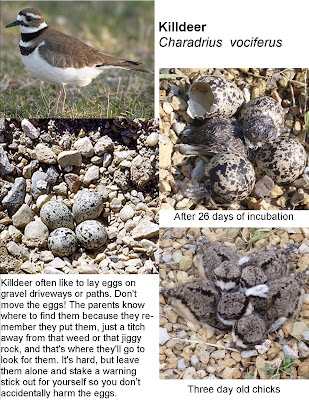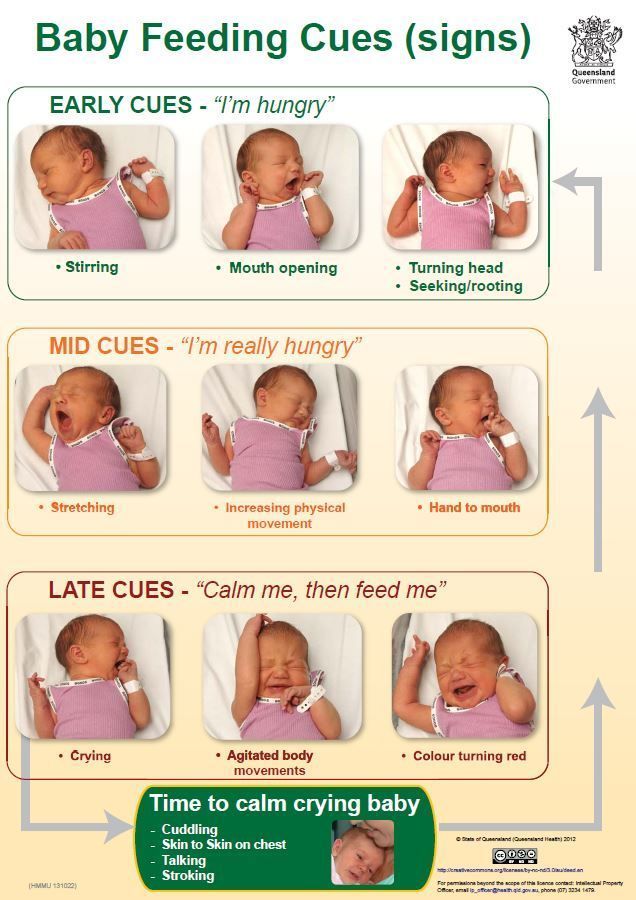Food for 1 year old baby with no teeth
50 Delicious Foods for 1 year old with few teeth
When your baby’s first little tooth erupts, it gives rise to mixed emotions. On one hand, there’s joy, because your little one is growing and on the other hand, there’s horror, if you’re still breastfeeding! For most babies, the first tooth makes an appearance anywhere from four months onward and some babies are even born with teeth. On the other end of the spectrum, you may have a late bloomer, whose first tooth takes its own sweet time, maybe even till he’s a year old! Here are 50 foods for 1 year old with few teeth.
50 foods for 1 year old with few teeth
Fruit Finger foods for babies without teeth
Vegetable Finger Foods for Babies without teeth
Breakfast Recipes for Babies without Teeth
Lunch/Dinner Recipes for Babies without Teeth
Snack Finger Food Recipes for Babies without Teeth
Dessert recipes for Babies without Teeth
Tips for feeding babies without teeth/foods for 1 year old with few teeth
Frequently Asked Questions
Can you give finger foods to baby with no teeth?
What can my baby eat with 2 teeth?
What can I feed my 1 year old with no teeth?
What should 1 year old be eating?
Buy Healthy Nutritious Baby, Toddler food made by our own Doctor Mom !
But you’re obviously not going to wait till his first birthday to start solids! Since the recommended age for starting to wean is 6 months, many babies don’t depend upon their teeth to eat. Besides, the first teeth that appear are usually the front teeth, which aren’t used for chewing anyway. (Their gums are enough for that, which your poor nipples probably know by now!)
For most babies till the age of 8 months, the puree and porridge phase goes by smoothly. But many Moms worry about their child’s diet after this phase, when they start thinking about introducing lumpier textures in their baby’s diet. Now you don’t need to worry if your baby still doesn’t have any teeth yet – we assure you, he’s not going to starve! Keep breastfeeding him for as long as you want, and as for foods, we’ve drawn up a list of 50 foods for babies without teeth , even if he’s still waiting for that first tooth!
50 foods for 1 year old with few teeth
Fruit Finger foods for babies without teeth
Most fruits can be fed directly, as long as they’re ripe. For starters, avoid the peel and ensure there are no seeds. For harder fruits, you can stew them for a few minutes to make them soft. These are finger foods for 6 month old baby with no teeth
These are finger foods for 6 month old baby with no teeth
1. Bananas – Can be fed as it is, just ensure that it is ripe enough
2. Avocado – Go for perfectly ripe avocados, or it’ll be too hard for baby
3. Peach – Feed ripe peaches directly
4. Mango – Go for ripe ones, but avoid the extremely squishy ones
5. Strawberries – Hull before offering to baby
6. Watermelon – Remove the seeds and ensure only the red parts are given
7. Pear – Peel and give baby; if it seems to hard, stew it for some time
8. Apple – Peel before giving baby; if the apple is too crunchy, stew it first
9. Muskmelon – Can be given directly, if it is ripe and soft enough
Vegetable Finger Foods for Babies without teeth
Vegetables are hard for babies without teeth to eat directly, so will require some steaming or boiling. Cook till just soft and not any more, or else they’ll turn into mush and won’t be the texture you’re looking for. These are good for finger foods for 7 month old baby with 2 teeth.
10. Carrot – steam or boil to make it soft, but don’t overcook
11. Cauliflower – Roast or steam; take care to prevent burning
12. Broccoli – Roast or steam lightly; it’ll crumble if overcooked
13. Potato – Boil or steam well till soft
14. Pumpkin – Cook for a short while till the cubes are just soft
15. Zucchini – Steam or cook lightly till soft
16. Beetroot – Steam or boil till quite soft
Breakfast Recipes for Babies without Teeth
Many of these breakfast ideas can be made for the whole family or older kids as well. Choose from Indian and other cuisines so your baby gets used to sweet and savory breakfasts. You can add fruit on the side as well. These are good foods for toddlers with few teeth
17. Eggless Apple Whole Wheat Pancake – You can skip the salt if you like
18. Banana Toast – You can also try almond milk
19. Waffles – You can use coconut milk or almond milk to make these
20. Vegetable Idli – You can start with only grated carrot and add more vegetables later on
21. Blueberry Oat Muffins – Substitute the milk with almond milk or baby formula
Blueberry Oat Muffins – Substitute the milk with almond milk or baby formula
22. Scrambled Eggs – You can use coconut milk instead, and skip the salt
23. Oat Cereal – You can add pureed fruit for more bulk
24. Baby Omelette – You can skip the milk or add formula
25. Steamed Dosa – Serve this with chutney powder for babies
26. Banana Pancakes – Make your own pancake batter and use
Lunch/Dinner Recipes for Babies without Teeth
Meals like lunch and dinner seem to be the biggest challenge for Moms of babies with no teeth, but there are many options. Adjust the salt content when you cook for baby – try adding spices instead to flavor the food. You can add all these foods in your 1 year old baby food menu
27. Flavored Paneer – Make sure the paneer is soft and not rubbery
28. Chicken Carrot Meatballs – You can also try plain chicken meatballs
29. Butternut Squash Risotto – You can use any short grained rice
30. Sweet Potato and Lentil Croquettes – Opt for cheese with less salt
31. Butternut Mac and Cheese – Skip the salt and curry, you can also replace the thyme with fresh herbs
Butternut Mac and Cheese – Skip the salt and curry, you can also replace the thyme with fresh herbs
32. Mini Aloo Paratha – Skip the salt; later you can try adding peas to the filling
33. Carrot Khichdi – You can also try this with beetroot
34. Bolognese Pasta – You can use chicken mince
35. Ghee Rice – Use homemade ghee for better results
36. Chicken Nuggets – You can use turkey or chicken here, be sure that you’re using boneless pieces
These are a few of best delicious foods for 1 year old with few teeth.
Snack Finger Food Recipes for Babies without Teeth
If you’re trying to get baby to eat on a schedule, you can offer her these snacks when she gets hungry in between. Try to balance it like this: if she hasn’t had any veggies all day, try with a veggie snack.These are perfect finger foods for 1 year old
37. Soft Cheese
38. Sweet Potato Fries – Serve with homemade tomato sauce
39. Cauliflower Nuggets – Skip the salt; substitute breadcrumbs with powdered baby cereal
40. Spinach Fritters – Skip the chillies and chilly powder
Spinach Fritters – Skip the chillies and chilly powder
41. Baked Avocado Fries – Substitute bread crumbs with powdered baby cereal
42. Pumpkin Sooji Fingers – Serve with homemade tomato sauce
43. Banana Oatmeal Fingers – You can also add a little of our Dry Fruit Powder
44. Broccoli Cheese Nuggets – Substitute bread crumbs with powdered baby cereal and use cheese with less salt
Dessert recipes for Babies without Teeth
While you don’t need to make a sweet dish a daily affair, once in a while even baby deserves a treat! Making them less sweet will prevent a sweet tooth later, whenever the teeth come in! These are perfect finger foods for 9 month old with no teeth
45. Carrot Cake – Skip the soda, and use almond or coconut milk
46. Samai Payasam – You can add a small amount of the dry fruit powder for taste
47. Fruit Yogurt – Avoid yogurt that is too sour
48. Frozen Applesauce Treats – Get the applesauce recipe here
49. Egg Pudding – Substitute the milk with coconut milk or almond milk
Egg Pudding – Substitute the milk with coconut milk or almond milk
50. Wheat Halwa – Try not to make it too runny to give baby a chance to chew
Tips for feeding babies without teeth/foods for 1 year old with few teeth
1. Check the age recommendation on each recipe before feeding your baby.
2. Make sure you follow the 3 day rule with all new foods to be aware of any allergy.
3. Always be in the room with your baby when he’s eating.
4. With a new food, introduce small amounts at a time.
5. In case of any doubt, consult a doctor.
Most babies will find a way to gnaw on their food, chew on it at the back of their mouths and swallow. They generally have a natural gagging reflex to prevent choking, so they’ll spit out food that’s may be dangerous – don’t force it back down. With some trial and error, you’ll soon find that your baby is able to enjoy most foods – you’ll know when you see that loving toothless grin!
Hope this huge list of foods for 1 year old with few teeth was helpful for you, please let us know your queries in comments.
Frequently Asked Questions
Can you give finger foods to baby with no teeth?
Yes, we can give finger foods to baby with no teeth. As baby's gums are very strong, they can easily chew on soft finger foods with ease. In this article we have listed 50 foods for babies without teeth
What can my baby eat with 2 teeth?
Here are the list of foods that your baby can eat with 2 teeth - soft fruits, soft steamed vegetables, pancakes, soft dosas, mac and cheese, khichdi etc. we have compiled a interesting list of 50 foods for babies with few teeth
What can I feed my 1 year old with no teeth?
Here are the list of foods that you can give your 1 year old baby with no teeth - soft fruits, soft steamed vegetables, pancakes, soft dosas, mac and cheese, khichdi etc. we have compiled a interesting list of 50 foods for 1 year old baby with no teeth.
What should 1 year old be eating?
A 1 year old baby can eat all the foods that the family eats with less spice and salt
Buy Healthy Nutritious Baby, Toddler food made by our own Doctor Mom !
Shop now!125 first foods for babies with no teeth
by Jo
Can you imagine eating food without any teeth? Just with your gums alone? I surely find it hard to picture, but we were once like our little ones. Toothless, like a 100 year old grandma. Luckily, there are first foods for babies with no teeth. And I found 125 of them for you to read about.
Toothless, like a 100 year old grandma. Luckily, there are first foods for babies with no teeth. And I found 125 of them for you to read about.
PIN IT FOR LATER
The original article was written back in 2018. This is a 2021 updated version.
Since then, I have re-written and updated this post to reflect the changes I have gone through when it came to my own beliefs/thoughts and how I word things when talking about feeding kids. As such, the remains of the original article can be seen in the comments section. Word of caution, it’s not something that makes too much sense anymore and some parts I am not very proud of. I even considered deleting the comments altogether, but that doesn’t seem just right either. Either way, I hope this article helps you, even a bit.
Yes, the Pinterest pins show blueberries and they are a choking hazard, but do read the entire post. I have tried to give suggestions for each type of food so as to make them safe even for little ones.
If I missed anything, give me a shout.
But how can babies even chew without teeth?
Well, the truth is, they don’t need teeth to chew.
Chewing involves movements of the jaw, tongue and cheek. Teeth are used later on to break up more complex fibres.
This is technically done with the teeth that are more at the back of the mouth, called molars. The first molars show up somewhere between 13 and 19 months old, as you can see from the graph below.
So if we were to wait that long before we gave our little ones any food that can be easily munched on with the gums, then we would seriously endanger his or her capabilities of dealing with food (not to mention the fact that after around 8 months, the gag reflex moves further down the tongue and babies might experience a higher risk of choking if they are not accustomed to table foods yet).
Furthermore, babies are already experienced in munching away, because they would have spent a lot of time already with their fingers in their mouth, biting toys and other objects.
So encourage them to explore these with their lips, tongue and jaw, at the same time being careful of any pieces that might come off and increase the risk of choking.
So, assuming little one doesn’t have any teeth yet, what can I give him?
See the list below.
But before anything else, make sure baby meets the three signs he or she is ready to begin in the first place. I cannot stress this enough, guys, and it will save you lots of trouble down the road.
There was a time when the recommendations said to start solids at 4 months+ and I’m not sure that all the baby food manufacturers have come up-to-date with the current official advice regarding infant feeding. Always watch the signs in your baby and judge whether he or she is ready. This usually happens at around 6 months, give or take.
Here you go, some ideas of first foods for babies with no teeth. I also added some notes and suggestions of serving for some of them.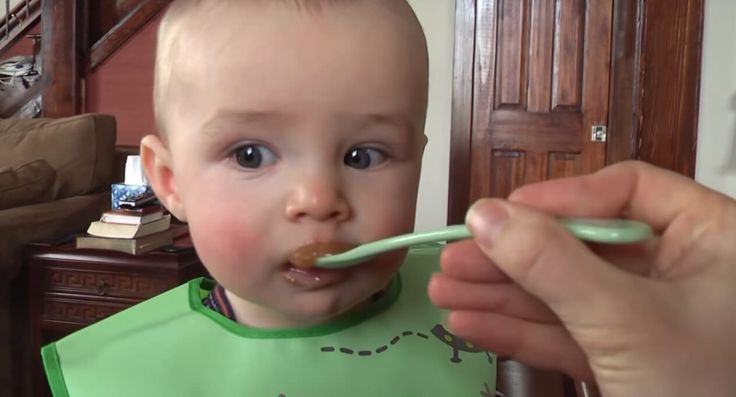 This is regardless of the method you use, baby led weaning or traditional. At some point, you’ll have to start giving them table foods.
This is regardless of the method you use, baby led weaning or traditional. At some point, you’ll have to start giving them table foods.
And because I’m a fan of food groups, I have split them accordingly, for easier reference.
Note: please be aware of choking hazards. I find this article sums up pretty well what are the foods you need to pay extra attention to. As your little one develops his ability to chew, you need to be careful, teeth or no teeth.
Fruits and veggies
As a general rule, go for the ripest you can get, in the beginning, as these are usually softer for babies just starting out.
- Avocado. Serve as is, sliced into wedges, or served on toast, mashed, with an egg on top. You can also try a guacamole recipe, which is basically adding some tomato, red onion, a bit of pepper and some lemon juice to a mashed avocado. For an easier grip, you can toss it through some breadcrumbs or ground nuts.
- Banana.
 Serve as is, sliced or mashed. Here is a tip on how to offer it if baby is at the beginning, doing baby led weaning and has tiny hands. Also, here’s my recipe of baby’s chocolate you can make with banana and avocado.
Serve as is, sliced or mashed. Here is a tip on how to offer it if baby is at the beginning, doing baby led weaning and has tiny hands. Also, here’s my recipe of baby’s chocolate you can make with banana and avocado. - Apricot. Pick a softer variety, the riper, the better. Cut into wedges or mash.
- Tomato. Try serving them as such or on top of a pizza toast (just a slice of toast, with some mozzarella and tomatoes and baked for 10 minutes in the oven). My youngest sometimes enjoys it cut wedge-style.
- Peach. Extra ripe are usually softer.
- Mango. Go for the ripe ones.
- Strawberry. Remove the hull (the leafy and usually white part on top) before giving it to baby. Halved would be best. The bigger ones even cut into 4 pieces.
- Watermelon. Melts in the mouth. Remove the seeds and only give the red parts to baby.
- Pear. Peel it and if it’s too hard, you can bake it in the oven for a while, with cinnamon on top.
- Apple. Peel and cook it in the oven, like the pear, or shred it on a grater (I used to do this in the beginning when Emma was small; the finer side of the grater also turns the apple into applesauce).

- Muskmelon.
- Honeydew melon.
- Carrot. Steam, boil or bake in the oven to make it soft. Don’t offer raw to babies just starting out.
- Cauliflower. Steam, boil or bake in the oven with some seasoning on top.
- Broccoli. Here are 10 basic techniques for cooking broccoli from scratch, explained in-depth. Plus, you’re getting a free cheatsheet with the 3 ingredients that make broccoli taste good.
- Potato. Boil, bake or even steam until very soft.
- Sweet potato. Cook in the same way as a normal potato.
- Pumpkin. Bake in the oven until soft.
- Zucchini. Baked or boiled until it’s soft. Also grated works really well, incorporated in baked batters.
- Beetroot. Steam or boil. Be careful, though, as it contains a high amount of nitrates and it is not ok for baby to have in big quantities or too often. If you offer a varied menu, it shouldn’t be a problem.
- Grape. Cut them in quarters lengthways. Use this if you’re short on time.

- Satsumas or easy peelers. Cut in half for safety.
- Clementines.
- Raisins. If you leave them to hydrate in water for 1 hour or so they should give up their sweetness. They are a choking hazard as per the link I shared above, so pay extra attention. Better incorporate them in baked foods.
- Blueberry. Smash/squish them for safety or cut them in half.
- Blackberry. I would halve these in the beginning, as there are some quite big.
- Cucumber. I would only offer the middle part in the beginning, as it’s softer and easier to manage for babies just starting out.
- Peas. Great for improving that pincer grasp.
- Sweetcorn.
- Baked beans. Great source of iron.
- Plum.
- Kiwi.
- Dried apricots. Great source of iron, like any dried fruit, really. A bit on the sweet side, so be mindful of that.
- Cherries. Cut in half or quarters.
- Sour cherries. Serve the same as cherries.
- Pineapple.
- Orange.
 Cut the pieces in half or more.
Cut the pieces in half or more. - Raspberries.
- Olives. Beware of how salty they are. If left in water, they will lose their saltiness.
- Papaya.
- Dried cranberries. Same as raisins, so better incorporate them in a batter/dough.
- Parsnips. Boil, steam or bake in the oven with some seasoning on top. You can remove the center which is usually harder.
- Butternut squash. Bake or steam.
- Bell pepper. Bake or boil.
- Green beans. Boil or steam.
- Chickpeas. Best boiled or turned into hummus or falafel.
- Onion. Boiled or baked.
- Turnips. Boiled until soft. You can make a veggie broth by boiling most of the hard veggies.
- Cabbage. Boiled or baked.
- Mushrooms. Make a sauce for pasta or bake them in the oven.
- Lentils. Turn them into soup or stews.
- Eggplant. Baked in the oven is your best bet.
- Asparagus. Can be a bit hard, but baby can munch away if properly cooked, like in the oven or steamed.

- Edamame. Never cooked them, but I guess either boiled or steamed.
- Kaki fruit.
- Lychee. Just make sure to peel the outer shell.
- Grapefruit. Cut each slice in three smaller pieces or more, depending on size.
- Pomelo. Cut each slice in multiple pieces.
- Lemon. My youngest loves his lemons cut into wedges and he just sucks at the pulp.
- Figs
- Passion fruit
- Yam. It’s a root vegetable and can be cooked in a similar way to a sweet potato.
- Brussel sprouts. Boiled, steamed or baked with seasoning.
- Nectarine. Go for riper ones and cut into wedges.
- Ugli fruit.
- Plantains. They look like bananas, but you have to cook them. They come from Jamaica, I believe.
Related posts
- 14 smash cake ideas – healthy, no sugar
- Blueberry galette (a recipe great for blw)
- 33 tips to easily end picky eating for good
- 5 alternatives to baby cereal that won’t break the bank + 1 tip
- Why you should not feed your baby smoothies, overnight oats, maple syrup and other foods
- Bread and butter pudding (baby friendly, also great for babies with no teeth)
Meat/poultry/fish
- Salmon.
 I usually bake it in the oven, wrapped loosely in baking paper or foil, for around 20 minutes.
I usually bake it in the oven, wrapped loosely in baking paper or foil, for around 20 minutes. - Cod. Cook the same way as salmon.
- Haddock.
- Mince meat. You can cook some meatballs.
- Steak. Serve in shredded strips, like the chicken.
- Chicken. Serve in shredded strips for babies to suck on and munch away later on.
- Tuna. I am guilty of buying cans of it, but if you can bake it from scratch, that’s even better. Squeeze a bit of lemon to give it some flavour.
- Crab. If your little one is not allergic to seafood, you can give it a go.
- Prawns/shrimp. Great finger food.
- Homemade sausages.
Breads/cereal
- Bread. To prevent it from sticking to the roof of the mouth, toast it. Or make some french toast.
- Rice. Great in rice puddings.
- Porridge
- Porridge fingers
- Millet. Boiled in milk or turned into a pudding (see my recipe here)
- Quinoa.
 Boiled and eaten as a side or added to porridge, for example.
Boiled and eaten as a side or added to porridge, for example. - Amaranth. Same as quinoa.
- Buckwheat. Same as the above.
- Semolina pudding.
- Spaghetti
- Pasta. Macaroni, penne, fussili or bowtie shapes work well for beginners.
- Noodles
- Homemade pizza
- Polenta
- Cous-cous
- Naan bread
- Pitta bread
- Tortillas
- Rice cakes. Go for the lowest salt option.
- Shreddies. Simple, no flavor, no added salt or sugar, just 100% wholegrain. Serve in milk.
- Focaccia
- Chapatti fingers (an Indian flat bread)
Eggs (in the UK, those that have a lion stamped on the shell are salmonella-free, therefore the yolk can be left runny when cooked – otherwise please cook the yolk completely)
- Boiled eggs
- Poached eggs (only in the UK)
- Fried eggs (just don’t use oil and fry in a non-stick pan)
- Scrambled eggs
- Omlette
- My baked omlette
Dairy
- Yoghurt
- Cheddar cheese.
 Just watch out for salt and the amount present. Grated is best at the beginning.
Just watch out for salt and the amount present. Grated is best at the beginning. - Mozarella. Choose the lowest salt option.
- Sana. It’s an Eastern European type of dairy, similar to yogurt, but slightly drinkable.
- Kefir. Similar to sana. You can find them in the European section in the supermarket.
- Curd cheese. I have a recipe for it here. It’s a no-salt version of cheese, perfect for babies.
- Cottage cheese. Just make sure the salt levels are okay.
Others
- Tofu. Just watch out for the salt content.
- Homemade muffins (try this carrot muffins recipe)
- Homemade pinwheels
- Homemade banana bread
- Homemade biscuits (easiest recipe: 100 g flour, 100 g butter and 100 g of homemade curd cheese or ricotta cheese; everything mixed and baked in the oven)
- Pancakes
- Waffles. Here’s a basic recipe to follow, which is infinitely customizable. A bit of waffle theory never hurt.

- Fritters. I have a recipe here, very adaptable to what you have in your pantry.
- Homemade nuggets
- Any homemade cake-like consistency, as long as there is no sugar, maple syrup, honey (if baby is under 1 year old), whole nuts, etc.like this baked oatmeal cake.
- Homemade popsicles or anything that’s made out of fruit and yogurt and frozen.
- Peanut butter. It is best to spread it on toast or on slices of banana. Just make sure it’s 100% nuts.
- Almond butter. Same as peanut butter.
- My apple pudding
BONUS:
126. 2 ingredient cookies. The easiest snack ever. Pair it with some dairy and you’re good to go.
127. 3 ingredient pancakes. The fluffiest and easiest pancake recipe out there. Make sure to read my notes on timing and flipping and why those are the key elements for the fluffiness.
128. Spiced biscuits. I think these are great for when little ones are teething.
129. Easy scones. With only 3 ingredients at the base, these are soft and fluffy. Don’t overmix the batter though.
Don’t overmix the batter though.
130. A kid friendly brownie with a secret nutritious ingredient.
You are probably thinking: is there anything she hasn’t mentioned?
In fact, I haven’t mentioned the leafy vegetables, like spinach, lettuce, salad etc because babies might have a hard time tearing them apart so as not to stick to the roof of their mouths.
I also didn’t mention pomegranate, because of its high choking risk.
What comes next?
Knowing what to feed your kids might be a little easier now that you have this list, but actually getting them to eat or at least try any food is another story entirely.
This is why I have put together a 7-part blog series about how to get your little one to eat any food. It is based on more than 3 years of feeding little tummies, observing and taking mental notes about everything I did and everything they did at mealtimes.
I think you’ll find it useful and worth reading. You can save it on Pinterest for later reading or share with someone you know.
You can save it on Pinterest for later reading or share with someone you know.
Thanks!
Ioana x
START READING HERE >>
Categories Baby food, Blog, Featured, The basics Tags baby led weaning, BLW, finger foods, first foods© 2022 WEANINGFUL • Built with GeneratePress
How to feed a child in 1 year? Balanced baby nutrition: sample diet
Proper nutrition of a child in a year is an important condition for harmonious growth and development. In addition, a properly composed diet helps to strengthen the immune system. Receiving new products, the baby gradually gets acquainted with the diet. Pediatricians advise paying attention to the child's diet, its proper balancing.
Nuances of nutrition
The diet of a child in 1 year is subject to the following principles:
- should be complete, meet all the needs of the body, provide vitamins, micro- and macroelements;
- diversity. As many combined foods as possible should be present in the diet daily;
- all food must be chopped.

Specialized foods must be included in order to properly balance the diet. They should be designed according to the needs of the child's body in a year. If you have any doubts or questions regarding the nutrition of your baby, you can seek advice from our doctors. They will remotely select an individual diet, tell you about all the nuances of the nutrition of one-year-old babies.
The diet must not be violated
The most advantageous is the diet according to the schedule. An individual nutrition program contributes to the rapid accustoming of the child to the daily routine. Even intervals between meals will not let the baby get hungry. According to the WHO, a child's diet at 1 year old should include breakfast, lunch, dinner, and an afternoon snack.
Meal plan for the day:
| Name | Description |
| 9. | If the child gets up early, in this case it is permissible to feed an hour earlier. All other meals are shifted by an hour |
| 12.30 - lunch | Before dinner, it is recommended to take a walk, which will increase the appetite. For long walks, a snack is allowed two hours before the main meal. |
| 16.30 - afternoon snack | The amount of food is small. Eating easy |
| 19.00 - dinner | Dinner is served on the table two hours before bedtime. |
Important! When cooking, it is necessary to refuse fried, fatty and fried foods. The first meat broths merge. Salt and sugar are added in a minimal amount.
Which products to prefer
WHO recommends including the following foods in the children's menu:
- dairy products.
 Children under the age of one year do not give milk in its pure form. It is replaced with breast milk or mixtures. Kefir and yogurt are introduced gradually. Their fat content should not exceed 3.2 percent. Sour cream and cheeses are allowed to be given no more than twice a week;
Children under the age of one year do not give milk in its pure form. It is replaced with breast milk or mixtures. Kefir and yogurt are introduced gradually. Their fat content should not exceed 3.2 percent. Sour cream and cheeses are allowed to be given no more than twice a week; - cereals. Porridge for a one-year-old child is given only for children. Adult coarse cereals are poorly digested in the baby's body. Allowed: oatmeal, buckwheat, millet, corn, rice porridge;
- vegetables fruits. By the age of 1, the child is familiar with apples, pears, bananas, prunes, zucchini, broccoli, carrots, potatoes. After a year, kiwi, beets, peas, apricots, beans are introduced into the diet. Legumes are given twice a week. The rest of the vegetables and fruits are allowed for use every day;
- meat fish. Hake, pollock, cod are given twice a week, low-fat meat varieties - daily;
- oil. Butter and vegetable oils are added to ready meals. If the child already chews well enough, it is permissible to smear butter on bread.
 vegetable oils are chosen only unrefined;
vegetable oils are chosen only unrefined; - eggs. Up to a year it is allowed to introduce quail eggs, after a year they give chicken no more than three times a week.
Example from practice: One-year-old Pasha's mother made the following menu for him for the day, which she plans to feed him until he is 1.5 years old: For breakfast, porridge/vegetable dishes, cottage cheese 200 g, drink 100 ml. Lunch consists of salad - 30 g, soup - 50 g, second meat course - 50 g, vegetables / cereals - 70 g, compote - 100 ml. For an afternoon snack, mom offers ryazhenka or kefir - 150 ml, cookies, crackers - 15 g, juice, fruits - 100 g. For dinner, cereals / cottage cheese / vegetables are served - 180 g, fermented milk products - 100 ml, fruits - 50 g.
Further, the weight of the products will gradually increase with the age of Pasha. Mom made up the optimal variant of the diet together with specialists.
Prohibited products for children from the year
The list of products not recommended for baby food includes:
- any kind of sausages, sausages;
- fried food;
- smoked meats;
- exotic vegetables, fruits;
- caramel, chewing gum;
- products containing flavor enhancers, dyes; flavors.
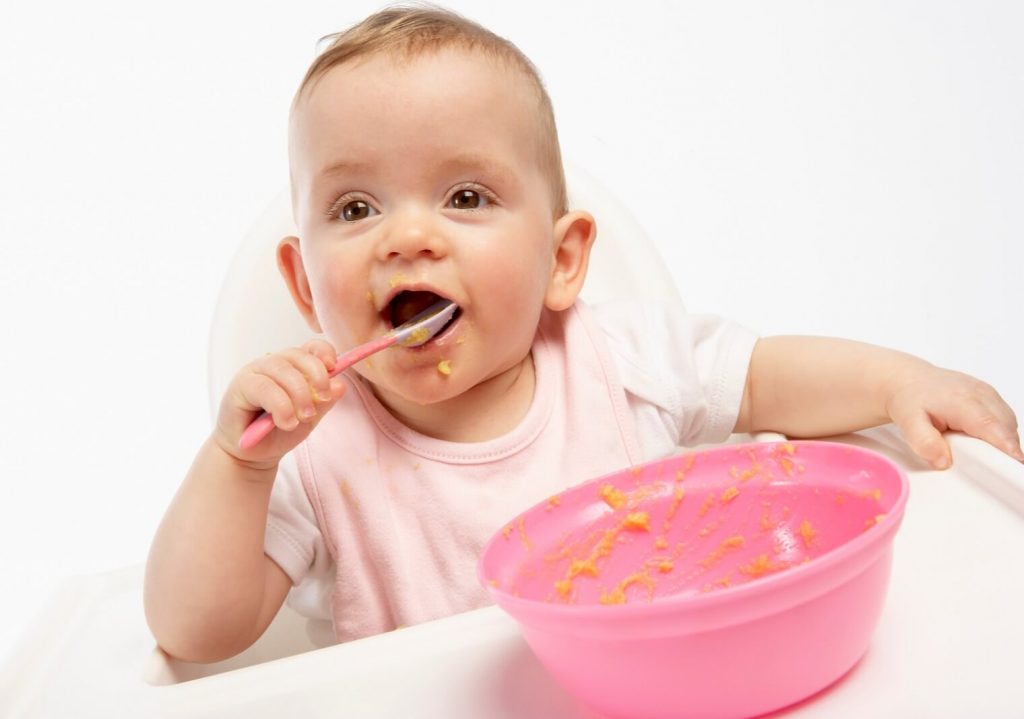
Children are limited in food with a lot of cholesterol, nuts. The latter can cause an allergic reaction. It is not advisable to give mushrooms, as they overload the child's digestive tract. For all questions, you can contact our doctors at any time of the day. They will remotely adjust the diet and help balance it.
Norm of food per day for a one-year-old child
The total daily calorie content should not be less than or more than 1300 Kcal. However, these figures are relative, as each child is individual. Someone develops quickly, and someone vice versa. And such children may need a supplement in the diet.
For breakfast, babies should consume at least 300 ml, for lunch - 420 ml, for an afternoon snack - 180 ml, for dinner - 300 ml.
Dr. Komarovsky advises to purchase only seasonal products. In his opinion, they will be able to provide the maximum benefit for the growing body of the child.
One year old baby menu for every day
Experienced doctors recommend feeding the baby up to 6 times a day. There should be 4 main meals.
Breakfast
In the morning, it is preferable to give milk porridge. Milk is diluted with water before use. Proportions for cereals: 200 ml of milk per 2 tablespoons of cereals. Twice a week it is permissible to serve an omelet from 1 egg. Prepare an omelette for a couple. You can add dill. It stimulates digestion. Wash down with compote, weak tea.
Snack
Yogurts and fruit purees are allowed here. They stimulate the production of gastric juice, digestion. A healthy snack is a baked apple with cookies. Fruit purees from jars, children's drinking yogurts are suitable.
Lunch
Lunch is the main meal. It can be only the first or second course, or maybe all together. Soups are cooked thick, rich, satisfying. Broths are prepared on boneless pulp. The first is drained, and vegetables are added to the second broth. Let's add some oil. The second offers cereals on the water, vegetables, salads, meat or fish. Spices, roasts are excluded.
Let's add some oil. The second offers cereals on the water, vegetables, salads, meat or fish. Spices, roasts are excluded.
Snack
For a small snack, cottage cheese casseroles, milk porridges, cheesecakes, cookies with compote, milk are suitable. Cow's milk is administered with caution. Start with small amounts, diluted with water. Observe the reaction, as cow's milk is considered an allergen.
Dinner
Dinner is scheduled five hours after the afternoon snack. Vegetable puree, porridge, stew with meat or fish are served. It is allowed to add a little oil to the stew.
When breastfeeding, the second dinner is allowed in the form of mother's milk. Children who are used to eating at night are gradually weaned from night feedings.
What to consider when formulating a diet
The nutrition of a one-year-old child should be in compliance with the regimen. You can also create a kind of ritual that will look like a joint table setting, decoration with bright napkins, original food serving.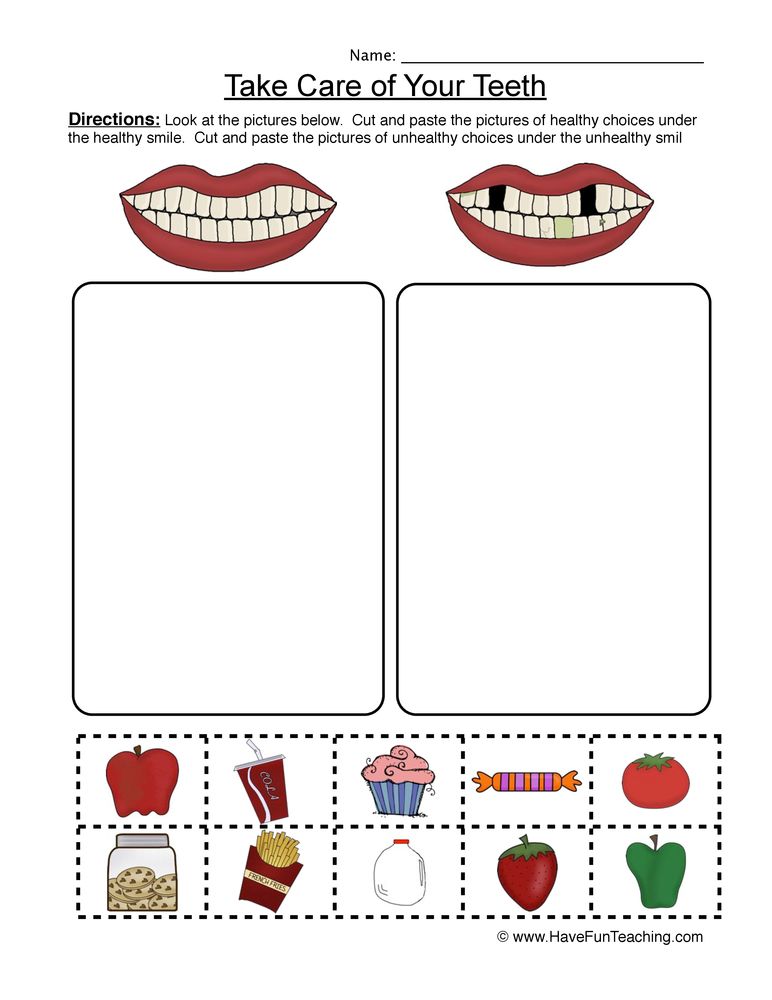
If for some reason the child refuses to eat this or that product, he is not completely excluded from the diet. It is recommended to add it in small quantities, mixing with the main dish.
If the baby refuses to eat, it is recommended to shift the time. Perhaps the child did not have time to get hungry. Or you can go for a walk and work up an appetite.
All meals are served in sequence. Don't put everything on the table at once. In this case, the baby will be confused, will try to try everything at once.
It is necessary to introduce new products with caution, in turn, starting with small portions. At the same time, the reaction of a small organism to innovations is closely monitored. In case of allergic reactions, the product is completely excluded.
Sweets in the form of confectionery, sweets, chocolate are not offered to kids. Small amounts of honey, syrups, jams, dried fruits, cookies are allowed.
FAQ
What must be present in the menu of a child at 1 year old?
+
The diet must be present: meat, dairy products, fruits, vegetables, bread, butter. Fish and eggs are given up to three times a week.
Fish and eggs are given up to three times a week.
What are the most common mistakes parents make when preparing meals?
+
The most common mistake is a monotonous diet, consisting of the same products. It is important to try to feed your baby a variety of foods. This will allow him not only to get acquainted with new products, but also to replenish the stocks of necessary substances.
Is it permissible to include solid food in the diet if the teeth erupted a little?
+
Solid foods help form healthy eating habits. In addition, it is useful for teething. Hard pieces help form the correct bite.
Should I put my baby to sleep after eating?
+
After eating, the baby is drawn to sleep. However, putting him to bed right away is not right. If the child walked a lot, spent a lot of energy, in this case, yes, it is allowed to sleep after eating. In all other cases, after eating it is better to play.
In all other cases, after eating it is better to play.
What to do if a child refuses to eat with everyone at the age of one?
+
You can't force feed a child. It is important to form a strong habit with him that all meals with the family at a certain time. If for some reason he refuses to eat, then until the next feeding he remains hungry. Good habits are formed from childhood.
Expert opinion
The diet of a child in one year should be balanced and varied. Do not try to feed your baby the same food. In this case, he will not get the necessary vitamins, macro- and microelements that are important for development and growth. When feeding, it is advisable to observe a strict regime, accustoming the baby to order. Do not forget about harmful foods that are completely excluded from the diet.
We publish only verified information
Article author
Pruzhinin Mark Yulievich pediatrician
Experience 30 years
Consultations 1572
Articles 104
An experienced pediatrician with extensive experience and clinical experience in various medical organizations in the field of general pediatrics, resuscitation-anesthesiology and neuroinfection. Works with leading experts, attends international and Russian conferences.
Works with leading experts, attends international and Russian conferences.
How to feed a child at 1 year old? Balanced baby nutrition: sample diet
Proper nutrition of a child in a year is an important condition for harmonious growth and development. In addition, a properly composed diet helps to strengthen the immune system. Receiving new products, the baby gradually gets acquainted with the diet. Pediatricians advise paying attention to the child's diet, its proper balancing.
Nuances of nutrition
The diet of a child in 1 year is subject to the following principles:
- should be complete, meet all the needs of the body, provide vitamins, micro- and macroelements;
- diversity. As many combined foods as possible should be present in the diet daily;
- all food must be chopped.
Specialized foods must be included in order to properly balance the diet. They should be designed according to the needs of the child's body in a year. If you have any doubts or questions regarding the nutrition of your baby, you can seek advice from our doctors. They will remotely select an individual diet, tell you about all the nuances of the nutrition of one-year-old babies.
If you have any doubts or questions regarding the nutrition of your baby, you can seek advice from our doctors. They will remotely select an individual diet, tell you about all the nuances of the nutrition of one-year-old babies.
The diet must not be violated
The most advantageous is the diet according to the schedule. An individual nutrition program contributes to the rapid accustoming of the child to the daily routine. Even intervals between meals will not let the baby get hungry. According to the WHO, a child's diet at 1 year old should include breakfast, lunch, dinner, and an afternoon snack.
Meal plan for the day:
| Name | Description |
| 9.00 - breakfast | If the child gets up early, in this case it is permissible to feed an hour earlier. All other meals are shifted by an hour |
| 12. | Before dinner, it is recommended to take a walk, which will increase the appetite. For long walks, a snack is allowed two hours before the main meal. |
| 16.30 - afternoon snack | The amount of food is small. Eating easy |
| 19.00 - dinner | Dinner is served on the table two hours before bedtime. |
Important! When cooking, it is necessary to refuse fried, fatty and fried foods. The first meat broths merge. Salt and sugar are added in a minimal amount.
Which products to prefer
WHO recommends including the following foods in the children's menu:
- dairy products. Children under the age of one year do not give milk in its pure form. It is replaced with breast milk or mixtures. Kefir and yogurt are introduced gradually. Their fat content should not exceed 3.
 2 percent. Sour cream and cheeses are allowed to be given no more than twice a week;
2 percent. Sour cream and cheeses are allowed to be given no more than twice a week; - cereals. Porridge for a one-year-old child is given only for children. Adult coarse cereals are poorly digested in the baby's body. Allowed: oatmeal, buckwheat, millet, corn, rice porridge;
- vegetables fruits. By the age of 1, the child is familiar with apples, pears, bananas, prunes, zucchini, broccoli, carrots, potatoes. After a year, kiwi, beets, peas, apricots, beans are introduced into the diet. Legumes are given twice a week. The rest of the vegetables and fruits are allowed for use every day;
- meat fish. Hake, pollock, cod are given twice a week, low-fat meat varieties - daily;
- oil. Butter and vegetable oils are added to ready meals. If the child already chews well enough, it is permissible to smear butter on bread. vegetable oils are chosen only unrefined;
- eggs. Up to a year it is allowed to introduce quail eggs, after a year they give chicken no more than three times a week.

Example from practice: One-year-old Pasha's mother made the following menu for him for the day, which she plans to feed him until he is 1.5 years old: For breakfast, porridge/vegetable dishes, cottage cheese 200 g, drink 100 ml. Lunch consists of salad - 30 g, soup - 50 g, second meat course - 50 g, vegetables / cereals - 70 g, compote - 100 ml. For an afternoon snack, mom offers ryazhenka or kefir - 150 ml, cookies, crackers - 15 g, juice, fruits - 100 g. For dinner, cereals / cottage cheese / vegetables are served - 180 g, fermented milk products - 100 ml, fruits - 50 g.
Further, the weight of the products will gradually increase with the age of Pasha. Mom made up the optimal variant of the diet together with specialists.
Prohibited products for children from the year
The list of products not recommended for baby food includes:
- any kind of sausages, sausages;
- fried food;
- smoked meats;
- exotic vegetables, fruits;
- caramel, chewing gum;
- products containing flavor enhancers, dyes; flavors.
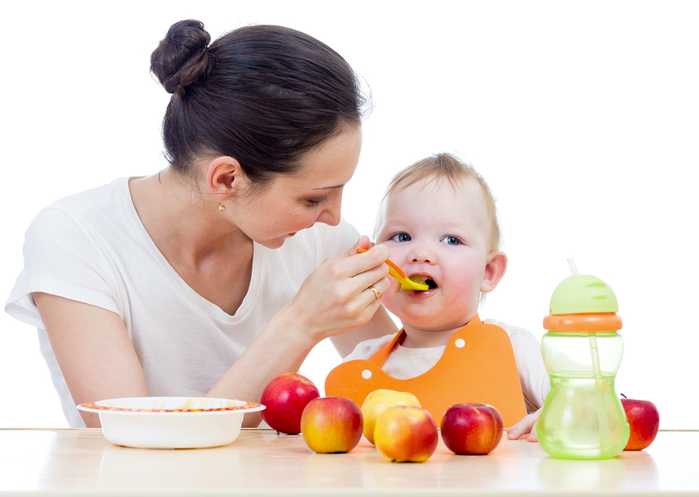
Children are limited in food with a lot of cholesterol, nuts. The latter can cause an allergic reaction. It is not advisable to give mushrooms, as they overload the child's digestive tract. For all questions, you can contact our doctors at any time of the day. They will remotely adjust the diet and help balance it.
Norm of food per day for a one-year-old child
The total daily calorie content should not be less than or more than 1300 Kcal. However, these figures are relative, as each child is individual. Someone develops quickly, and someone vice versa. And such children may need a supplement in the diet.
For breakfast, babies should consume at least 300 ml, for lunch - 420 ml, for an afternoon snack - 180 ml, for dinner - 300 ml.
Dr. Komarovsky advises to purchase only seasonal products. In his opinion, they will be able to provide the maximum benefit for the growing body of the child.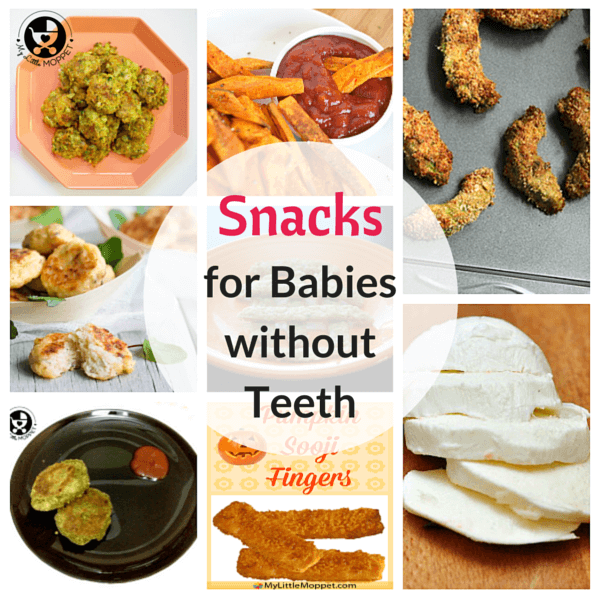
One year old baby menu for every day
Experienced doctors recommend feeding the baby up to 6 times a day. There should be 4 main meals.
Breakfast
In the morning, it is preferable to give milk porridge. Milk is diluted with water before use. Proportions for cereals: 200 ml of milk per 2 tablespoons of cereals. Twice a week it is permissible to serve an omelet from 1 egg. Prepare an omelette for a couple. You can add dill. It stimulates digestion. Wash down with compote, weak tea.
Snack
Yogurts and fruit purees are allowed here. They stimulate the production of gastric juice, digestion. A healthy snack is a baked apple with cookies. Fruit purees from jars, children's drinking yogurts are suitable.
Lunch
Lunch is the main meal. It can be only the first or second course, or maybe all together. Soups are cooked thick, rich, satisfying. Broths are prepared on boneless pulp. The first is drained, and vegetables are added to the second broth.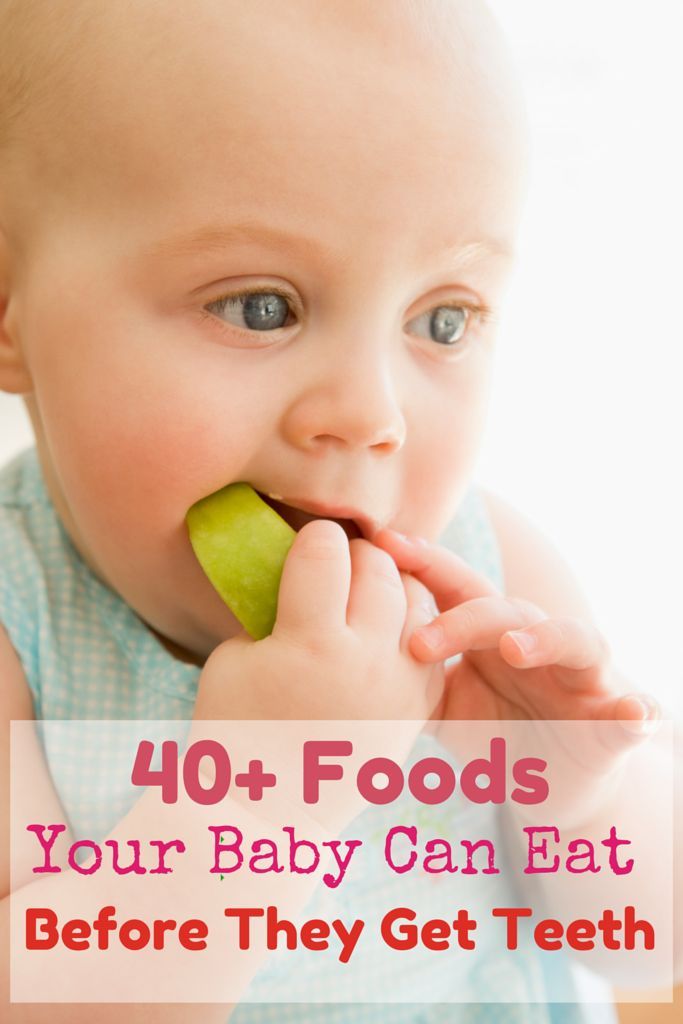 Let's add some oil. The second offers cereals on the water, vegetables, salads, meat or fish. Spices, roasts are excluded.
Let's add some oil. The second offers cereals on the water, vegetables, salads, meat or fish. Spices, roasts are excluded.
Snack
For a small snack, cottage cheese casseroles, milk porridges, cheesecakes, cookies with compote, milk are suitable. Cow's milk is administered with caution. Start with small amounts, diluted with water. Observe the reaction, as cow's milk is considered an allergen.
Dinner
Dinner is scheduled five hours after the afternoon snack. Vegetable puree, porridge, stew with meat or fish are served. It is allowed to add a little oil to the stew.
When breastfeeding, the second dinner is allowed in the form of mother's milk. Children who are used to eating at night are gradually weaned from night feedings.
What to consider when formulating a diet
The nutrition of a one-year-old child should be in compliance with the regimen. You can also create a kind of ritual that will look like a joint table setting, decoration with bright napkins, original food serving.
If for some reason the child refuses to eat this or that product, he is not completely excluded from the diet. It is recommended to add it in small quantities, mixing with the main dish.
If the baby refuses to eat, it is recommended to shift the time. Perhaps the child did not have time to get hungry. Or you can go for a walk and work up an appetite.
All meals are served in sequence. Don't put everything on the table at once. In this case, the baby will be confused, will try to try everything at once.
It is necessary to introduce new products with caution, in turn, starting with small portions. At the same time, the reaction of a small organism to innovations is closely monitored. In case of allergic reactions, the product is completely excluded.
Sweets in the form of confectionery, sweets, chocolate are not offered to kids. Small amounts of honey, syrups, jams, dried fruits, cookies are allowed.
FAQ
What must be present in the menu of a child at 1 year old?
+
The diet must be present: meat, dairy products, fruits, vegetables, bread, butter. Fish and eggs are given up to three times a week.
Fish and eggs are given up to three times a week.
What are the most common mistakes parents make when preparing meals?
+
The most common mistake is a monotonous diet, consisting of the same products. It is important to try to feed your baby a variety of foods. This will allow him not only to get acquainted with new products, but also to replenish the stocks of necessary substances.
Is it permissible to include solid food in the diet if the teeth erupted a little?
+
Solid foods help form healthy eating habits. In addition, it is useful for teething. Hard pieces help form the correct bite.
Should I put my baby to sleep after eating?
+
After eating, the baby is drawn to sleep. However, putting him to bed right away is not right. If the child walked a lot, spent a lot of energy, in this case, yes, it is allowed to sleep after eating.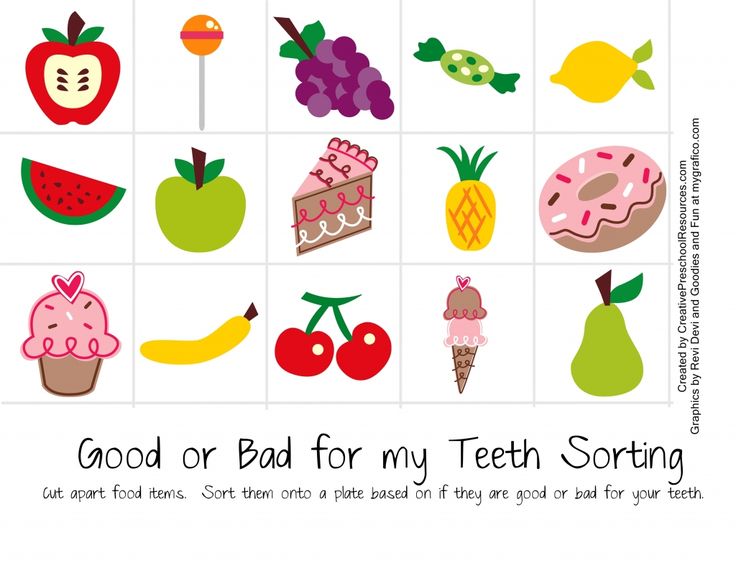

 00 - breakfast
00 - breakfast 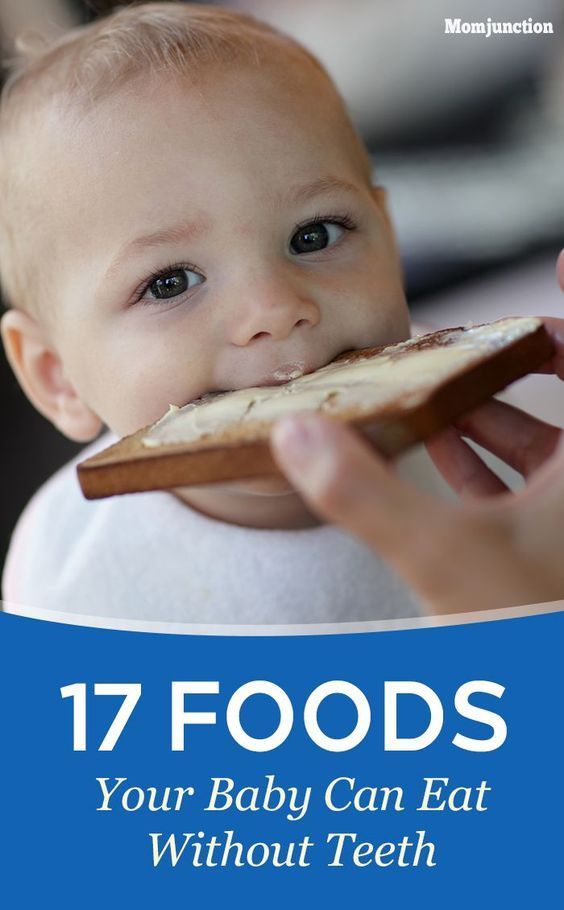 30 - lunch
30 - lunch 